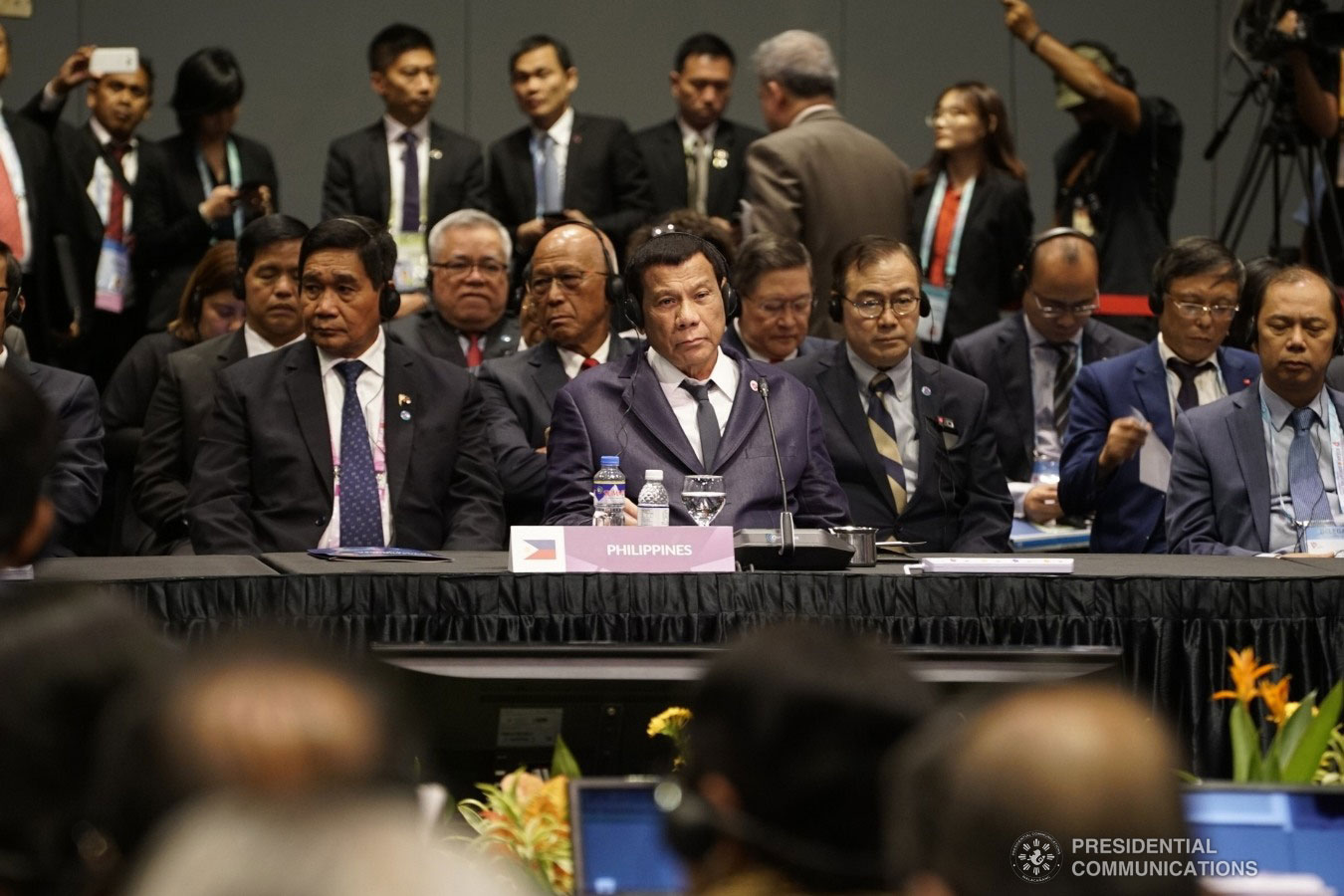
SINGAPORE — President Rodrigo Roa Duterte on Wednesday, November 14, delivered the Association of Southeast Asian Nations (ASEAN) Common Statement during the regional bloc’s meeting with the People’s Republic of China Premier Li Keqiang (Li Kuh Chang), noting that ASEAN-China relationship “remains one of the most dynamic and substantive partnerships in the region and a key pillar of the evolving regional architecture.”
With the Philippines as the new Country Coordinator of ASEAN-China Dialogue Relations, President Duterte narrated vital mutual interests and benefits in the cooperation of the ASEAN Member States and China.
In terms of political-security, ASEAN and China continue to enhance discussions and cooperation through various ‘ASEAN Plus One’ mechanisms including summits and officials’ meetings, among others.
“China has been a strong supporter for ASEAN Centrality, ASEAN Community-building, and its economic integration. Close dialogue and active consultations have contributed to building mutual trust and understanding, and enhanced cooperation in both traditional and non-traditional security issues,” the Chief Executive said.
He also reiterated that ASEAN and China are committed to the full and effective implementation of the Declaration on the Conduct (DOC) of Parties, in its entirety, and the expeditious conclusion of an effective Code of Conduct (COC) in the South China Sea.
“ASEAN and China have seen steady progress in the initial phase of the COC negotiations since the announcement of a Single Draft COC Negotiating Text and looked forward to the completion of the first reading of the Single Draft COC Negotiating Text by 2019. ASEAN and China will continue to maintain a conducive environment for future rounds of negotiations of the COC,” the President said.
As the co-chair of the COC negotiations, the Philippines, according to the President, will continue to work closely together with the ASEAN member countries and China for “the early conclusion of an effective and substantive COC.”
However, involved parties continue to reaffirm the significance of maintaining and promoting peace, security, stability, safety, and freedom of navigation and overflight on the contested waters.
“We also reaffirm the need to enhance mutual trust and confidence, exercise self-restraint in the conduct of activities and avoid actions that may further complicate the situation, and pursue peaceful resolution of disputes in accordance with international law, including the 1982 UNCLOS (United Nations Convention on the Law of the Sea),” the President emphasized.
“ASEAN and China also successfully completed an ASEAN-China Maritime Exercise for the first time. The Exercise is a useful confidence-building measure that strengthens practical cooperation, and builds mutual trust, friendship, and understanding among ASEAN and Chinese navies,” he continued.
Regarding economic cooperation, China has been ASEAN’s largest trading partner for more than eight years. In 2017, the merchandise trade between the two reached US $441.6 billion, while the Foreign Direct Investment from China amounted to US $11.3 billion.
President Duterte also noted that since 2015, both sides have successfully upgraded the ASEAN-China Free Trade Area (ACFTA) through the implementation of the ACFTA Upgrade Protocol by concluding negotiations to enhance the Product Specific Rules under the ACFTA this year.
“We will continue further discussions on the tariff liberalization and investment liberalization and protection, as well as other areas of mutual benefit to bring ASEAN and China closer to achieve the joint target of US $1 trillion in two-way trade and US $150 billion in two-way investment by 2022,” he said.
ASEAN and China also share a common interest in “preserving and promoting the multilateral trading system” through the Regional Comprehensive Economic Partnership (RCEP) agreement.
Furthermore, the President said that ASEAN-China will also release a joint statement on Science, Technology, and Innovation. This pertains to the enhanced cooperation in the area of connectivity consisting of Smart Cities, e-commerce, and the digital economy.
He also mentioned various exploration of synergies that enhance not only economic linkages but also people-to-people ties, consisting of the Master Plan on ASEAN Connectivity 2015 (MPAC 2015), the Belt and Road Initiative (BRI), the Brunei Darussalam-Indonesia-Malaysia-Philippines East ASEAN Growth Area (BIMP-EAGA), the Ayeyarwady-Chao Phraya Mekong Economic Cooperation Strategy (ACMECS) Master Plan, and the full liberalization of the ASEAN-China Air Transport Agreement (AC-ATA).
“ASEAN and China shall continue active cooperation to strengthen equitable and sustainable development in the region. ASEAN looks forward to the active participation of China in efforts to narrow the development gap and enhance sub-regional cooperation,” the President said.
Concerning socio-cultural cooperation, numerous activities between ASEAN and China have been underway such as public health, education, culture, labor, social security, local government, media, and social development, especially in tourism.
“China has become a major source of tourists for ASEAN. In 2016, the total number of tourist arrivals from China to ASEAN was 19.8 million, an increase of 6.4 percent compared to 2015, while the number of ASEAN tourists to China recorded 10.34 million, an increase of 57.8 percent,” the President added.
Towards the end of his remarks, President Duterte announced that the ASEAN-China Strategic Partnership Vision 2030 would provide a strategic roadmap for both parties’ cooperation in the next 12 years, and also complement many of the ASEAN-China agreements that were made through the years.###PND

